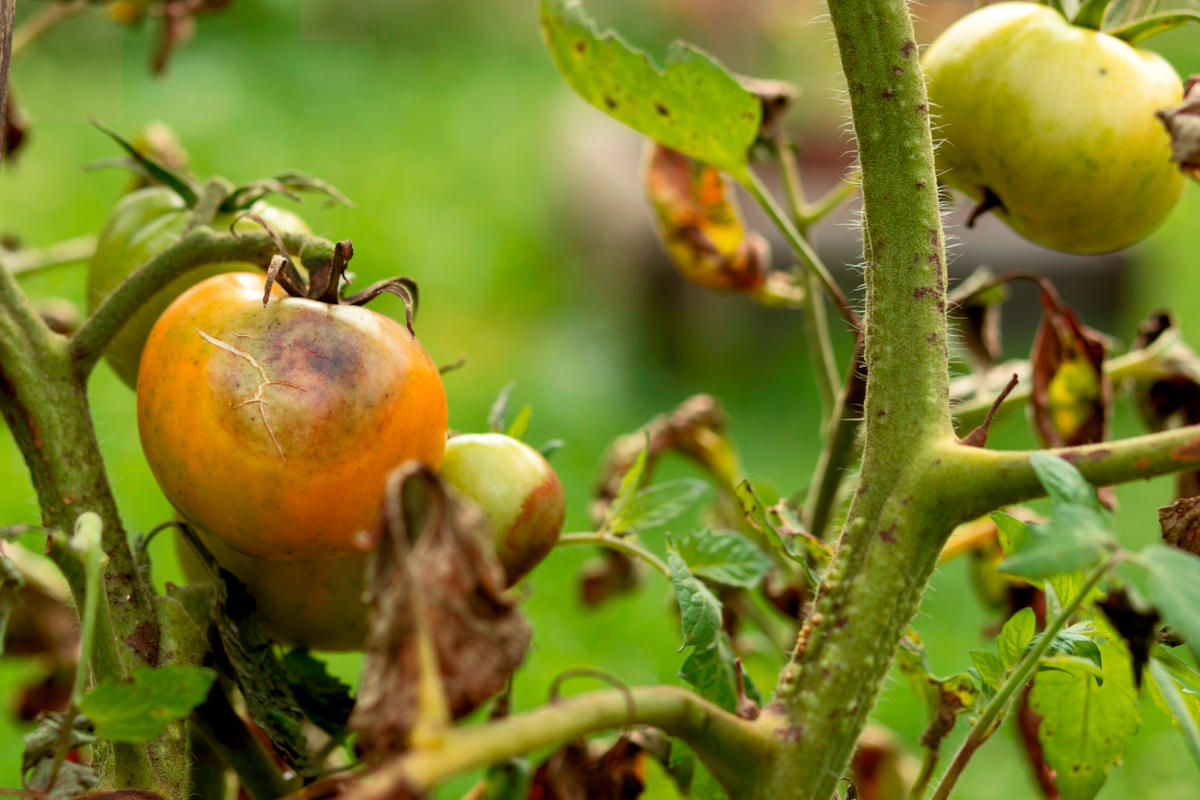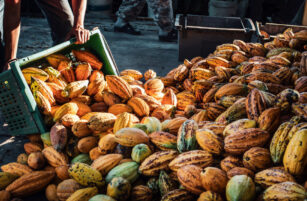Insight Focus
- Tomato trade is highly regionalised due to perishability.
- Tomatoes are used in a lot of processed foods such as sauces and pastes.
- Adverse weather in India and Europe is casting doubt on supply.
Tomato Market is Highly Concentrated
Although tomato production takes place in many countries, high scale production is concentrated in only a handful of countries. China, India, Turkiye and the US are responsible for production of most of the world’s tomatoes.
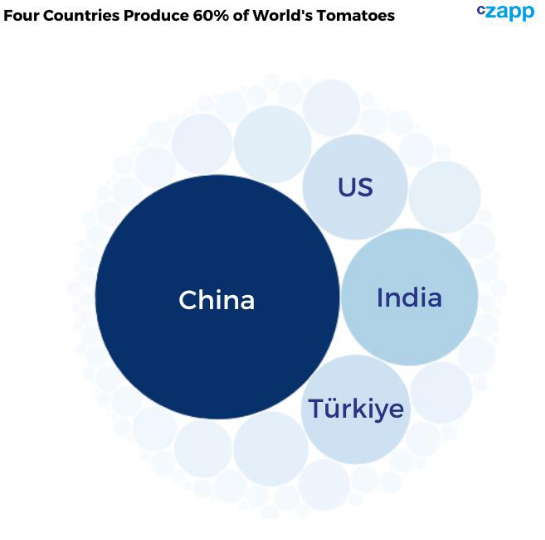
The largest consumers of tomatoes are also the biggest producers.
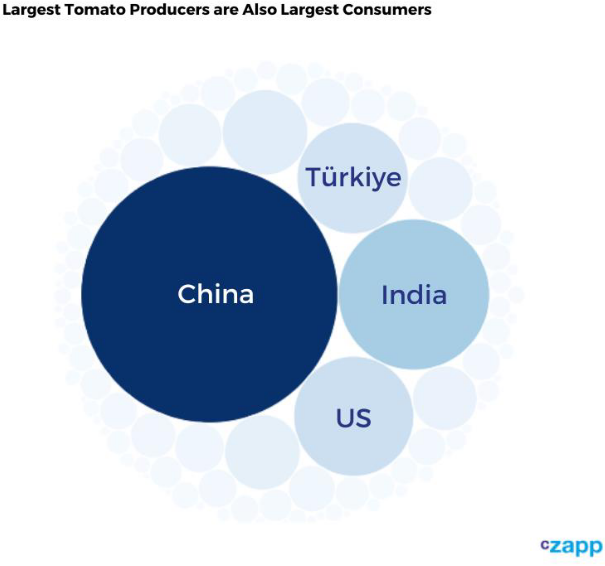
Tomato trade is highly regionalised, with the US importing most Mexican and Canadian tomatoes, while produce from producers in the EU largely stays within the bloc.

This is mainly because of the perishability of the fruit. Fresh tomatoes cannot easily or cheaply be transported long distances for fear of wastage. Instead, tomatoes are generally sold across larger distances in the form of tomato paste.
Around 39 million tonnes are processed annually around the world. Processed tomatoes are widely used in a range of easily recognizable products, such as pizza, ketchup and pasta sauce.
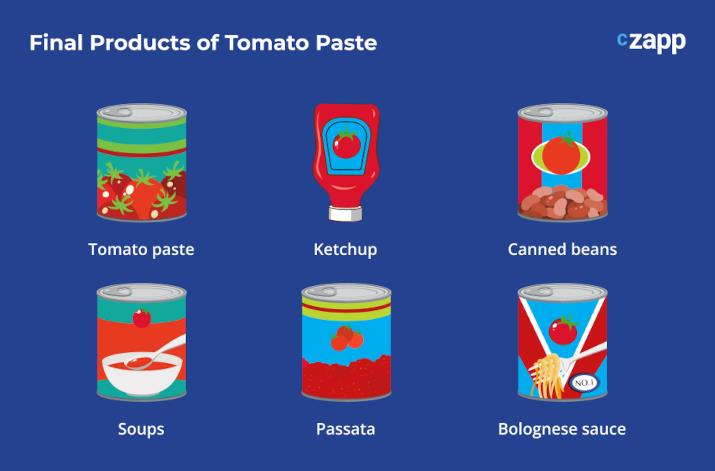
European Heatwaves Jeopardise Crop
Recently, temperatures in southern Europe have been soaring, leading to wildfires on the islands of Rhodes, Corfu, Crete and Evia.
Although some European tomatoes are produced in northern Europe, countries in the south like Spain, Portugal and Greece are responsible for much of the European tomato production. Crete is the location of Greece’s largest tomato crop.

In Spain, Extremadura is the primary tomato production region. Temperatures have been rising in recent years.
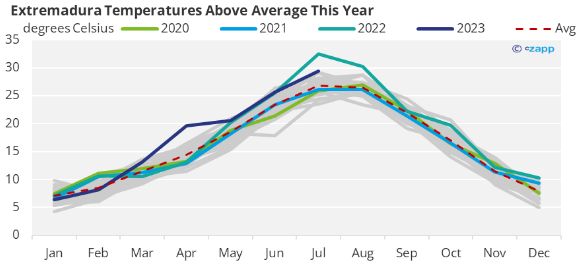
In addition, Morocco, which supplies most of France’s tomatoes, earlier this year limited tomato exports to the EU as it faced lack of rainfall.
Prices for tomatoes have soared as a result of shortages. European imports of Moroccan tomatoes have declined since the beginning of 2021 but the value has steadily risen.
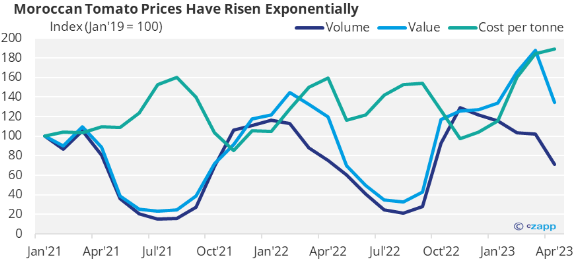
Source: Eurostat
The cost per tonne paid in January 2021 was just over EUR 1,200, according to Eurostat data, but by April 2023, that had almost doubled to EUR 2,280.
Indian Tomato Prices Soar
India – the world’s second largest tomato producer – is experiencing its own weather-related tomato issues.
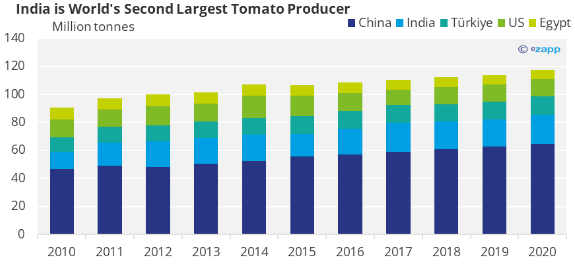
Source: FAOSTAT
Intense rainfall in recent months has decimated the Indian tomato crop and caused the spread of a fungal disease.
Madhya Pradesh is the country’s largest tomato producing state, accounting for almost 15% of the total.
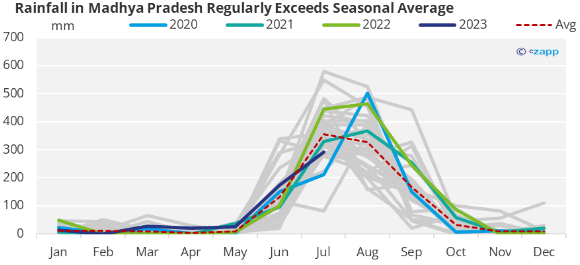
This is followed by Andhra Pradesh at 11% and Karnataka at 10%.

As a result, local tomato prices have quadrupled, according to a report by The Guardian. The situation is not expected to stabilise for at least three months.
Concluding Thoughts
- The cost of fresh tomatoes and, as a result, processed tomato products, is set to rise.
- The impacts of climate change will continue to be seen in more and more food crops.
- Climate change will exacerbate the existing supply problems related to the war in Ukraine and protectionism.
- As food supply is compromised, prices will continue to rise, drawing out high inflation.
- Some vulnerable crops such as tomatoes may be impacted more than others.
